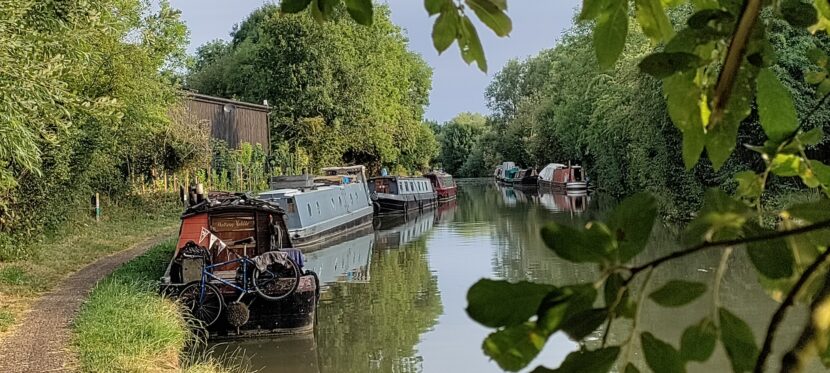If there’s one “pro-tip” I can give you, to make your boating easier and safer, that is to learn to stop your boat completely.
Boat’s don’t have brakes, well, most don’t, there are some odd arrangements on some larger vessels. Instead you can use a few seconds of reverse.
From moving forward, put the throttle in the neutral position, and take a breath (I do this so that the transmission has a chance to slow down and I’m not crashing from forward into reverse.)
Then put the throttle in reverse and apply some power for a few seconds, then go back to neutral.
You’ll need to look at the towpath or the bank, and at all those things that appear to be moving backwards when you’re moving forwards, to judge if you’ve stopped moving forward completely.
If you haven’t stopped moving forward, apply some more reverse power, put the throttle back to neutral and look at the bank again. Repeat until you have stopped completely.
Then you should look forward to the bow, and see which way the boat is swinging. It usually will be turning a little in one direction or another because of the paddle-wheel effect of the propeller.
Now, straighten the tiller, apply forward power at tickover, then push the tiller sideways to correct the swing (watch the bow to see when the swing has stopped.) Then back to neutral, take another breath, and use a small amount of reverse throttle, in tickover, to bring your boat back to a complete standstill.
If you do this when you stop in a lock chamber, or next to a lock landing, or where you want to moor, you’ll find you can then manoeuvre the boat slowly and deliberately to where you want it. Use the technique above to change the direction the boat is pointing, and very short bursts of throttle (forward and reverse, at tickover) to move forward and stop gently.
It’s much safer to step off a boat that’s stationary than one that is moving (even if it’s at a very slow pace) – it’ll cut out a lot of opportunities for you or your crew to slip or fall.
Stopping completely gives you time to think, to notice which way any wind or current is pushing your boat, and to plan what to do next. It’s invaluable when moving in a tight space like a marina.
So give stopping completely a try next time you’re going to make a slow manoeuvre. After all, we’re not in a hurry!
